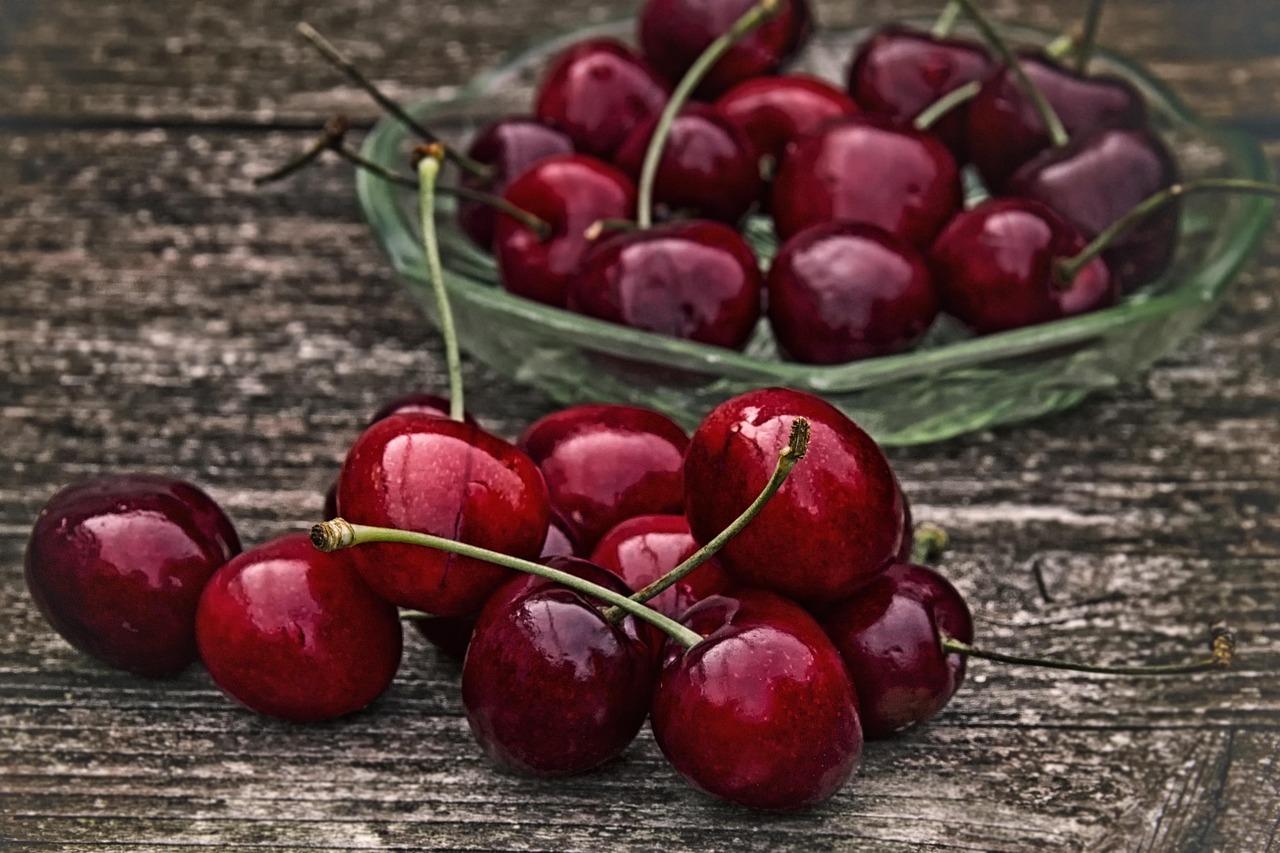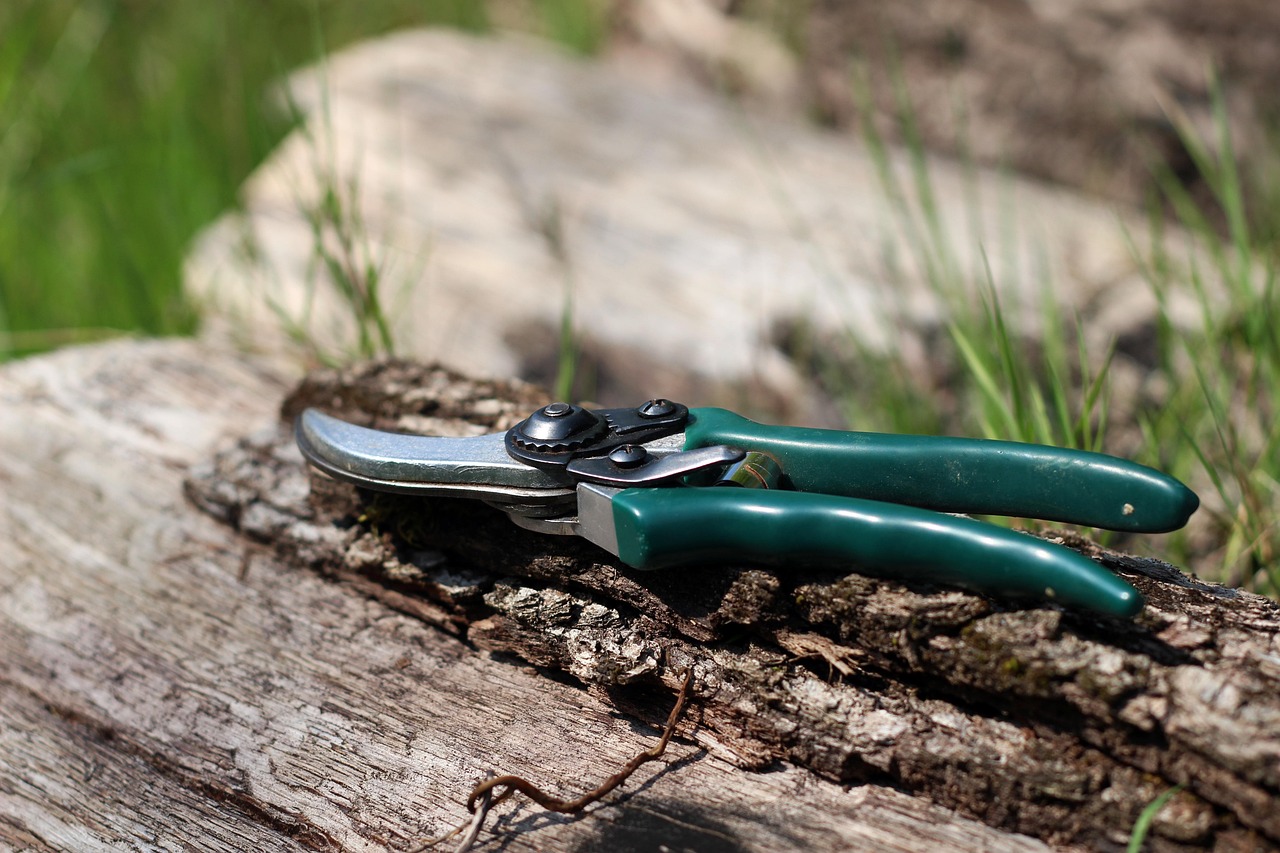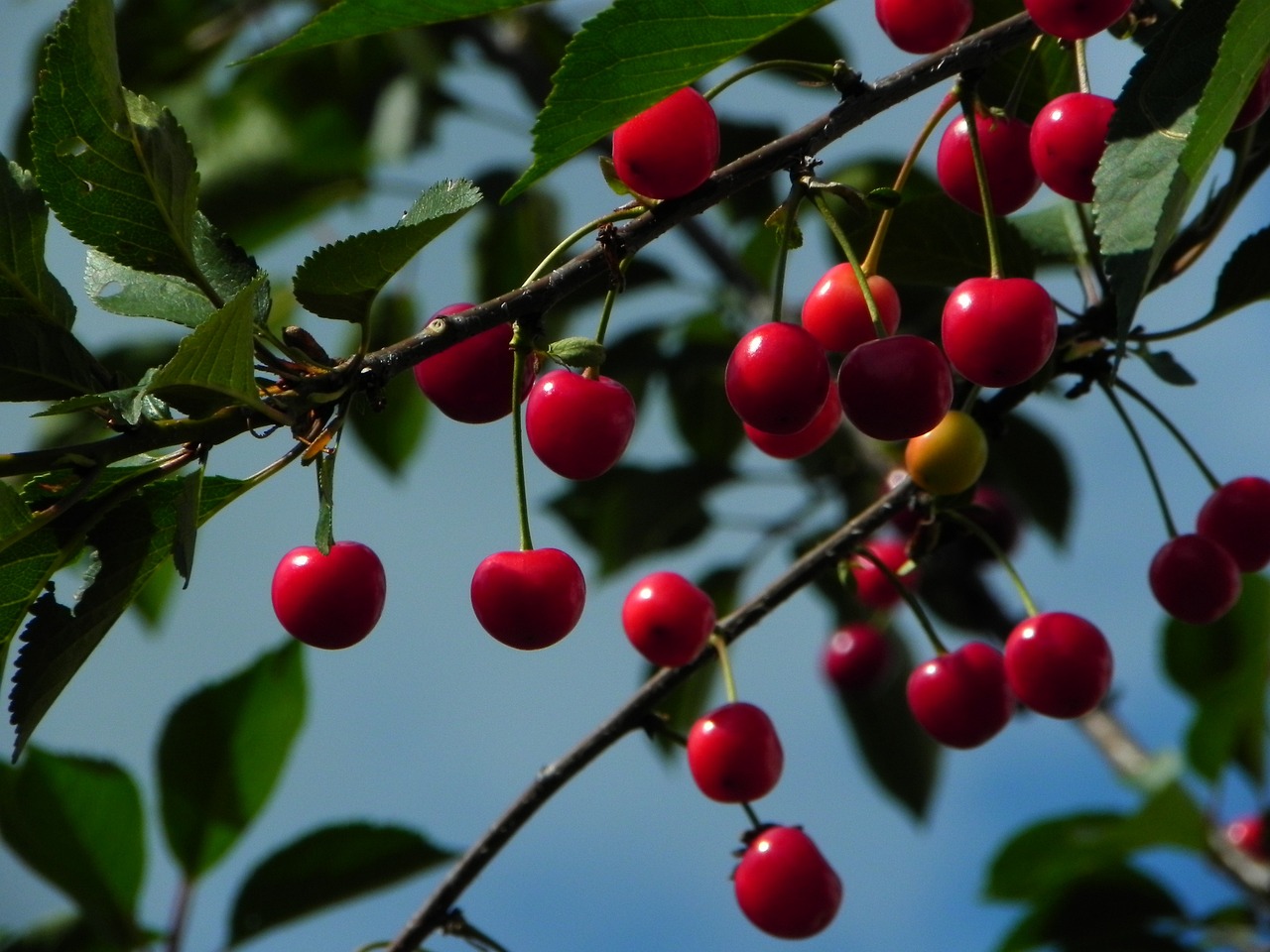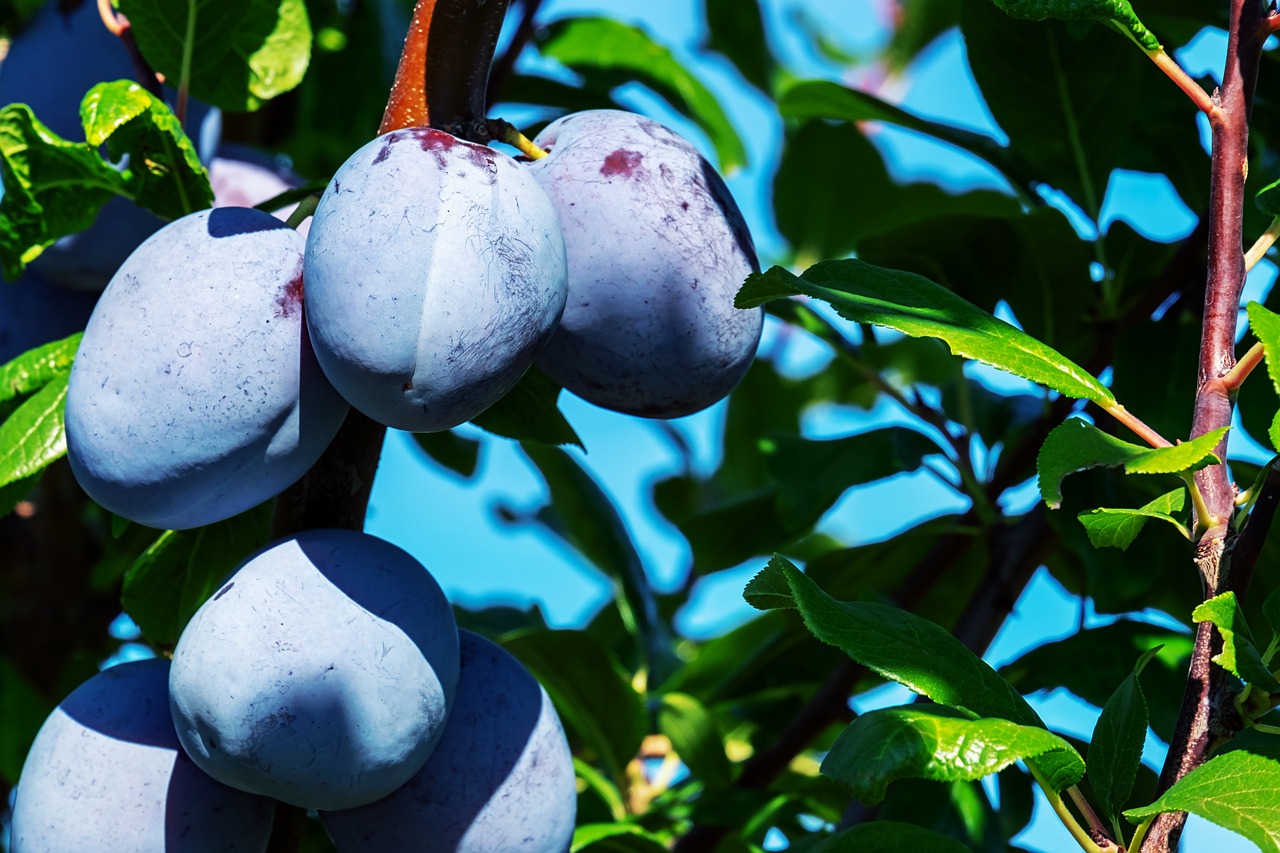Seasonal pruning of stone fruit trees is essential to promote healthy growth, improve fruit quality, and manage tree size. Proper timing and technique enhance fruit production and reduce disease risks, making it an important practice for any orchardist.
Stone fruit trees, including cherries, plums, peaches, and apricots, are popular in many home gardens and commercial orchards. These trees thrive in well-drained soil and require specific care throughout the year. Pruning is a critical part of this care, influencing both the health of the tree and the quality of the fruit it produces. By understanding the seasonal aspects of pruning, gardeners can ensure vibrant and productive trees.

Pruning stone fruit trees is typically performed during two main seasons: winter and summer. Each season has its unique purpose and method. Winter pruning focuses on shaping the tree and removing dead or diseased wood. Summer pruning can help manage tree size and improve air circulation. Timing and technique are crucial for achieving optimal results.
Understanding Stone Fruit Trees
Before delving into seasonal pruning techniques, it is essential to understand what stone fruit trees are. These trees are named for their hard pit or “stone” that encases the seed inside the fruit. They belong to the genus Prunus, which includes various species with differing characteristics.
Here are some common types of stone fruit trees:

- Peach Trees: Known for their sweet, juicy fruits, peach trees prefer well-drained soils and full sunlight.
- Cherry Trees: These trees produce delicious cherries and require regular pruning to maintain their shape.
- Plum Trees: Plums come in many varieties, each requiring specific care in terms of pruning and maintenance.
- Apricot Trees: Apricots are sensitive to late frosts, and careful pruning can help promote healthy growth.
Each type of stone fruit tree has its unique growth habits and requirements. Understanding these differences is vital for effective pruning practices.
Winter Pruning Techniques
Winter is the ideal time for major pruning activities when the trees are dormant. This practice helps reduce stress on the plants and minimizes sap loss. The primary goals of winter pruning are to remove dead or diseased branches and to shape the tree for optimal sunlight exposure.
Why Winter Pruning Matters
Winter pruning offers several benefits:

- Improves air circulation within the tree canopy.
- Encourages new growth in spring.
- Reduces the risk of disease by eliminating weak or infected branches.
- Shapes the tree for easier harvesting and maintenance.
Steps for Effective Winter Pruning
Follow these steps to prune stone fruit trees in winter:
- Assess the Tree: Examine the tree for any dead or diseased branches.
- Remove Deadwood: Cut back any branches that appear lifeless or have visible signs of disease.
- Thin Out Crowded Areas: Remove branches that cross or crowd each other to allow sunlight to penetrate the center of the tree.
- Shape the Tree: Trim back overly long branches to create a balanced shape.
- Avoid Over-Pruning: Limit pruning to 20-30% of the tree’s total canopy to prevent stress.
Summer Pruning Techniques
Summer pruning is less intensive than winter pruning but serves specific purposes, such as controlling growth and improving air circulation. This practice is usually done after fruit set but before harvest. It can also help redirect energy into fruit development rather than excessive vegetative growth.
Benefits of Summer Pruning
The advantages of summer pruning include:

- Maintaining a manageable tree size for easier harvesting.
- Improving airflow, reducing humidity levels within the canopy.
- Enhancing sunlight exposure to all parts of the tree.
Steps for Effective Summer Pruning
To properly prune stone fruit trees in summer, follow these guidelines:
- Monitor Growth: Look for excessive vertical growth that competes with fruit development.
- Trim Excessive Growth: Use sharp tools to carefully trim back new shoots that are too vigorous.
- Cull Suckers: Remove suckers growing from the base or along the trunk as they do not contribute to fruit production.
- Aim for Balance: Ensure that all parts of the tree receive adequate sunlight by thinning out branches if needed.
By following these seasonal pruning techniques, gardeners can maximize the health and productivity of their stone fruit trees, ensuring a bountiful harvest year after year.
Tools and Techniques for Pruning Stone Fruit Trees
Having the right tools and employing proper techniques are essential for effective pruning of stone fruit trees. Using sharp, clean tools ensures clean cuts, which help prevent disease and promote faster healing. Here are some important tools and techniques to consider.
Essential Pruning Tools
Investing in quality tools can make pruning easier and more efficient. Here are the essential tools every gardener should have:
- Hand Pruners: Ideal for cutting small branches and stems. Look for ones with a sharp blade and a comfortable grip.
- Loppers: Useful for reaching higher branches or thicker stems. They provide better leverage and power than hand pruners.
- Saws: A pruning saw is necessary for larger branches that cannot be cut with pruners or loppers. Choose a saw designed specifically for pruning to ensure it is effective and safe.
- Tree Poles: These extendable tools allow you to reach high branches without needing a ladder.
- Gloves: Protect your hands while working with thorns or rough bark.
Proper Pruning Techniques
In addition to having the right tools, it is crucial to use proper techniques during pruning to achieve the best results. Consider the following methods:
- Make Clean Cuts: Always aim to cut at an angle, just above a bud or branch junction. This technique helps the tree heal faster.
- Avoid Topping: Topping is the practice of cutting the top of a tree indiscriminately. This can lead to weak growth and increased risk of disease.
- Remove at the Right Time: Timing is crucial. Remove only what is necessary during winter, while summer pruning can focus on managing growth.
- Sanitize Tools: Clean your tools between cuts, especially if you notice any disease on the tree. This practice helps prevent the spread of pathogens.
Understanding Pruning Cuts
Different types of cuts serve varying purposes in pruning. Understanding these cuts can help you achieve the desired outcomes for your stone fruit trees.
Types of Cuts
| Type of Cut | Description | Purpose |
|---|---|---|
| Thinning Cut | A cut made to remove an entire branch back to its origin. | Improves air circulation and light penetration in the canopy. |
| Heading Cut | A cut that removes part of a branch, usually made above a bud. | Encourages bushier growth and can control height. |
| Reduction Cut | A cut that shortens a branch by removing part of it, but not back to its origin. | Maintains overall shape while reducing size. |
| Pinching | A method of removing the tips of new shoots using fingers or shears. | Encourages branching and denser foliage. |
Common Mistakes to Avoid When Pruning
Even experienced gardeners can make mistakes when pruning stone fruit trees. Being aware of common pitfalls can help ensure that your trees remain healthy and productive.
- Over-Pruning: Removing too much foliage can weaken the tree and reduce fruit production. Aim for a balanced approach.
- Poor Timing: Pruning at the wrong season can damage the tree. Always consider whether it is winter or summer before proceeding.
- Ineffective Cuts: Making cuts that do not promote healing can lead to disease entry points. Always aim for clean, angled cuts.
- Ignoring Tree Shape: Failing to maintain a tree’s natural shape can lead to poor growth patterns. Regularly assess and adjust as necessary.
- Neglecting Tree Health: Not checking for signs of disease or pests before pruning can exacerbate existing issues. Always examine the tree thoroughly before beginning work.
Post-Pruning Care for Stone Fruit Trees
The work doesn’t end after pruning. Providing proper care post-pruning is essential for optimal recovery and growth. Here are some tips:
- Watering: Ensure the tree receives adequate moisture during the growing season, especially after pruning when it may be stressed.
- Fertilization: Apply a balanced fertilizer in early spring to support new growth. Avoid fertilizing immediately after winter pruning.
- Pest Management: Keep an eye out for pests and diseases, especially in the weeks following pruning. Early detection is key to effective control.
- Mulching: Apply mulch around the base of the tree to retain moisture and suppress weeds. Ensure mulch is not piled against the trunk to prevent rot.
Caring for your stone fruit trees post-pruning will help them recover quickly and promote healthy growth throughout the season, ultimately leading to better fruit yields in the coming years.
Understanding the Growth Cycle of Stone Fruit Trees
To effectively prune stone fruit trees, it is important to understand their growth cycle. Each phase of growth impacts how and when to prune. Recognizing these phases will enhance your pruning strategy and improve the overall health of your trees.
Phases of Growth
Stone fruit trees undergo several key phases throughout the year:
- Dormancy: This occurs in late fall and winter. The trees conserve energy and are not actively growing, making it the ideal time for major pruning.
- Bud Break: In early spring, buds begin to swell and open. This marks the beginning of active growth, and careful pruning at this stage can promote healthy branches.
- Flowering: Stone fruit trees produce flowers in spring. Pruning during this time can disrupt fruit set, so it’s best to minimize cuts.
- Fruit Development: After flowering, fruits begin to develop and grow. Proper care during this phase is critical for fruit size and quality.
- Ripening: Fruits mature during the summer months. Pruning should be limited to managing growth and not interfering with fruit production.
- Leaf Drop: In fall, trees prepare for dormancy. This is a good time to assess the season’s growth and plan for winter pruning.
Identifying Tree Health Issues
Healthy stone fruit trees are more resilient to pests and diseases. Regularly inspecting your trees for signs of stress or illness is vital. Here are common health issues to watch for:
Common Diseases
Stone fruit trees can be affected by various diseases. Understanding these can help you take preventive measures:
| Disease | Symptoms | Treatment |
|---|---|---|
| Cytospora Canker | Sunken areas on the bark, dieback of branches. | Remove affected branches and improve airflow. |
| Brown Rot | Moldy fruit, premature fruit drop. | Remove infected fruit and practice good sanitation. |
| Peach Leaf Curl | Red, curled leaves in spring. | Apply fungicides during dormancy, remove affected leaves. |
| Powdery Mildew | White powdery spots on leaves and fruit. | Improve air circulation, apply fungicides if necessary. |
Pest Management
Pests can significantly affect the health and productivity of stone fruit trees. Common pests include:
- Fruit Flies: These pests lay eggs in ripe fruit. Use traps and remove affected fruits promptly.
- Aphids: Small insects that suck sap from leaves. Introduce beneficial insects like ladybugs to control their population.
- Spider Mites: These pests thrive in dry conditions and cause leaf discoloration. Regularly misting trees can help reduce their numbers.
- Caterpillars: They feed on leaves and fruit. Handpicking or using organic pesticides can manage their populations effectively.
Seasonal Care Practices Beyond Pruning
In addition to pruning, several seasonal care practices can enhance the health of stone fruit trees throughout the year.
Irrigation Practices
Proper watering is crucial for stone fruit trees, especially during dry spells. Here are tips for effective irrigation:
- Deep Watering: Water deeply but infrequently to encourage deep root growth. Aim for about 1-2 inches of water per week during the growing season.
- Avoid Overwatering: Check soil moisture before watering. Overly saturated soil can lead to root rot.
- Irrigation Systems: Consider installing drip irrigation systems for efficient water use, especially in larger orchards.
Nutritional Needs
Nutrient management is essential for optimal tree growth and fruit production. Understanding when and how to fertilize can greatly influence tree health:
- Soil Testing: Conduct soil tests to determine nutrient levels and pH, allowing you to adjust fertilization accordingly.
- Balanced Fertilizers: Use a balanced fertilizer with equal parts nitrogen, phosphorus, and potassium in early spring to promote healthy growth.
- Avoid Late Fertilization: Do not fertilize late in the season as this can promote new growth that may not harden off before winter.
Training Young Trees
The way young stone fruit trees are trained can influence their future shape and productivity. Proper training techniques help establish a strong structure from an early age.
Training Methods
- Centrally Leader Training: This method encourages a single main trunk with evenly spaced lateral branches. It is ideal for many stone fruit types.
- Open Center Training: This approach creates a vase-like shape with multiple main branches, allowing sunlight to reach all parts of the tree.
- Semi-Dwarf Training: For semi-dwarf varieties, limit height by pruning back the central leader early to maintain manageable size while maximizing yield.
The right training method will depend on the variety of stone fruit tree, local growing conditions, and personal preferences regarding maintenance and harvest ease.
By understanding these various aspects of caring for stone fruit trees, gardeners can ensure their trees thrive throughout the seasons, yielding delicious fruits year after year.
Additional Considerations for Successful Pruning
As you continue to care for your stone fruit trees, there are several additional considerations that can make a significant difference in their health and productivity. These factors include climate considerations, pest prevention strategies, and understanding the importance of biodiversity in your garden.
Climate Considerations
The climate in which your stone fruit trees grow greatly influences their growth patterns and pruning needs. Understanding your local climate can help you make informed decisions about when and how to prune:
- Temperature Fluctuations: Be mindful of late frosts in spring, which can harm new growth and flowers. Timing your pruning to avoid exposing buds too early is essential.
- Humidity Levels: High humidity can encourage fungal diseases. In areas prone to high humidity, ensure good air circulation through proper pruning techniques.
- Sunlight Exposure: Different varieties have varying sunlight requirements. Ensure that your trees receive adequate sunlight by pruning to remove any shading branches.
- Seasonal Rainfall: In regions with heavy rainfall, monitor soil drainage to prevent root rot. Adjust your watering practices accordingly.
Pest Prevention Strategies
Preventing pest infestations before they occur can save time and resources. Here are some effective strategies:
- Regular Inspections: Regularly check trees for early signs of pests or diseases. Early detection can significantly enhance control efforts.
- Companion Planting: Planting specific companion plants can deter pests and attract beneficial insects. For example, marigolds can repel aphids.
- Physical Barriers: Use netting or row covers to protect young trees from fruit flies and birds during the growing season.
- Insecticidal Soaps: Use organic insecticidal soaps or neem oil as a preventive measure against common pests.
The Role of Biodiversity in Your Garden
Biodiversity plays a vital role in creating a balanced ecosystem within your garden. Incorporating various plant species can promote healthy growth and reduce the risk of pests:
- Diverse Plantings: Mixing stone fruit trees with other plant types can attract beneficial insects that help control pests naturally.
- Flowering Plants: Include flowering plants that bloom at different times to provide habitat for pollinators throughout the growing season.
- Healthy Soil Practices: Use organic compost and mulches to improve soil health and promote a diverse microbial ecosystem.
Final Thoughts
Caring for stone fruit trees involves a comprehensive understanding of their growth habits, seasonal needs, and the impact of environmental factors. Through proper pruning, you can enhance not only the health and productivity of your trees but also their resilience against diseases and pests.
Remember that each tree is unique; observing their individual responses to pruning practices will help you develop a tailored approach over time. The right combination of winter and summer pruning, along with effective post-pruning care, will set the stage for abundant harvests.
As you apply these techniques, keep in mind the importance of ongoing education and adaptation. Gardening is a dynamic process, and staying informed about new practices and research will enable you to continuously improve your methods. With patience and dedication, your stone fruit trees will flourish, providing you with delicious fruits for years to come.
This seasonal pruning guide serves as a foundation for nurturing your stone fruit trees. By implementing these strategies and fostering an environment of care, you can look forward to enjoying the fruits of your labor while contributing positively to the ecosystem around you.
